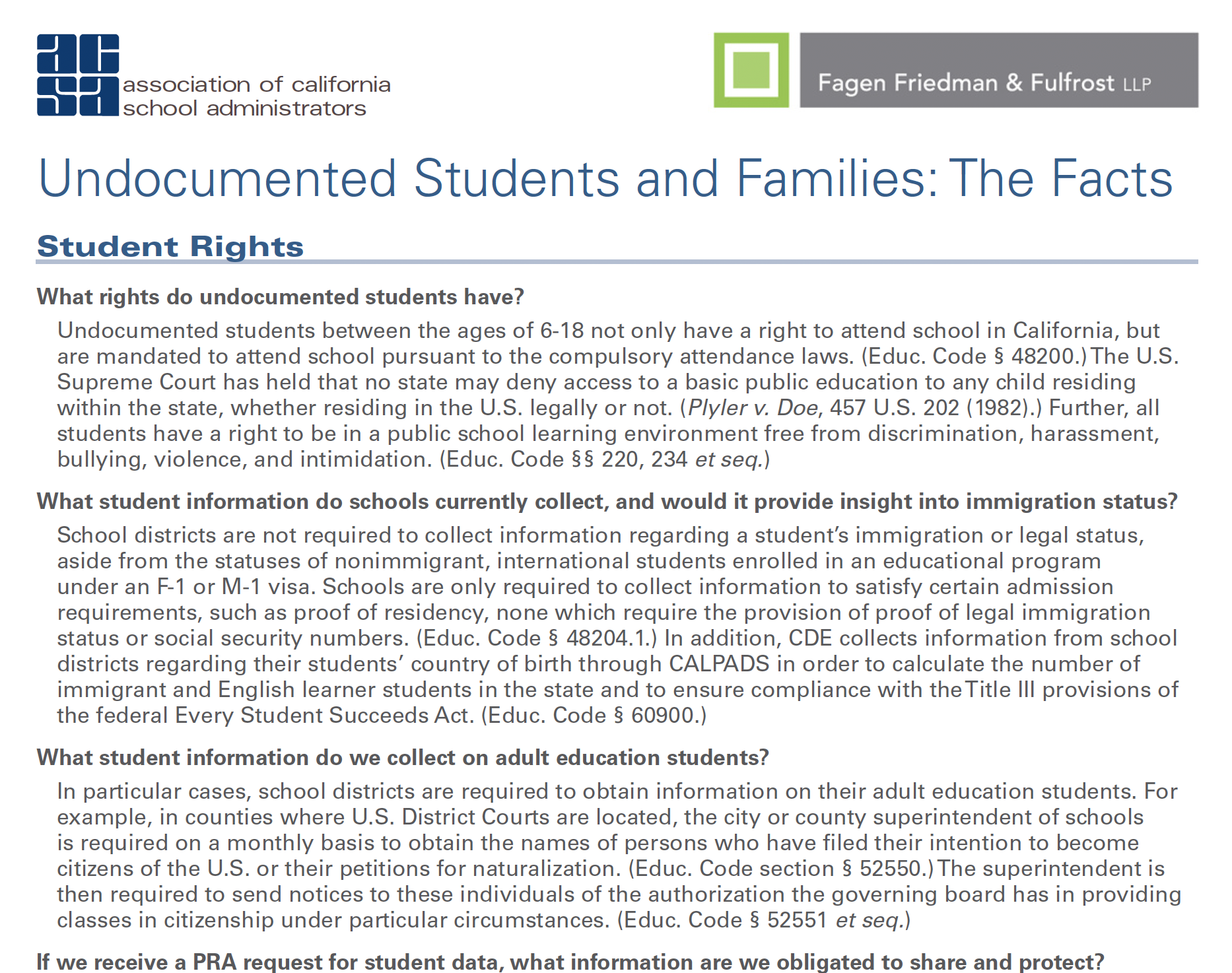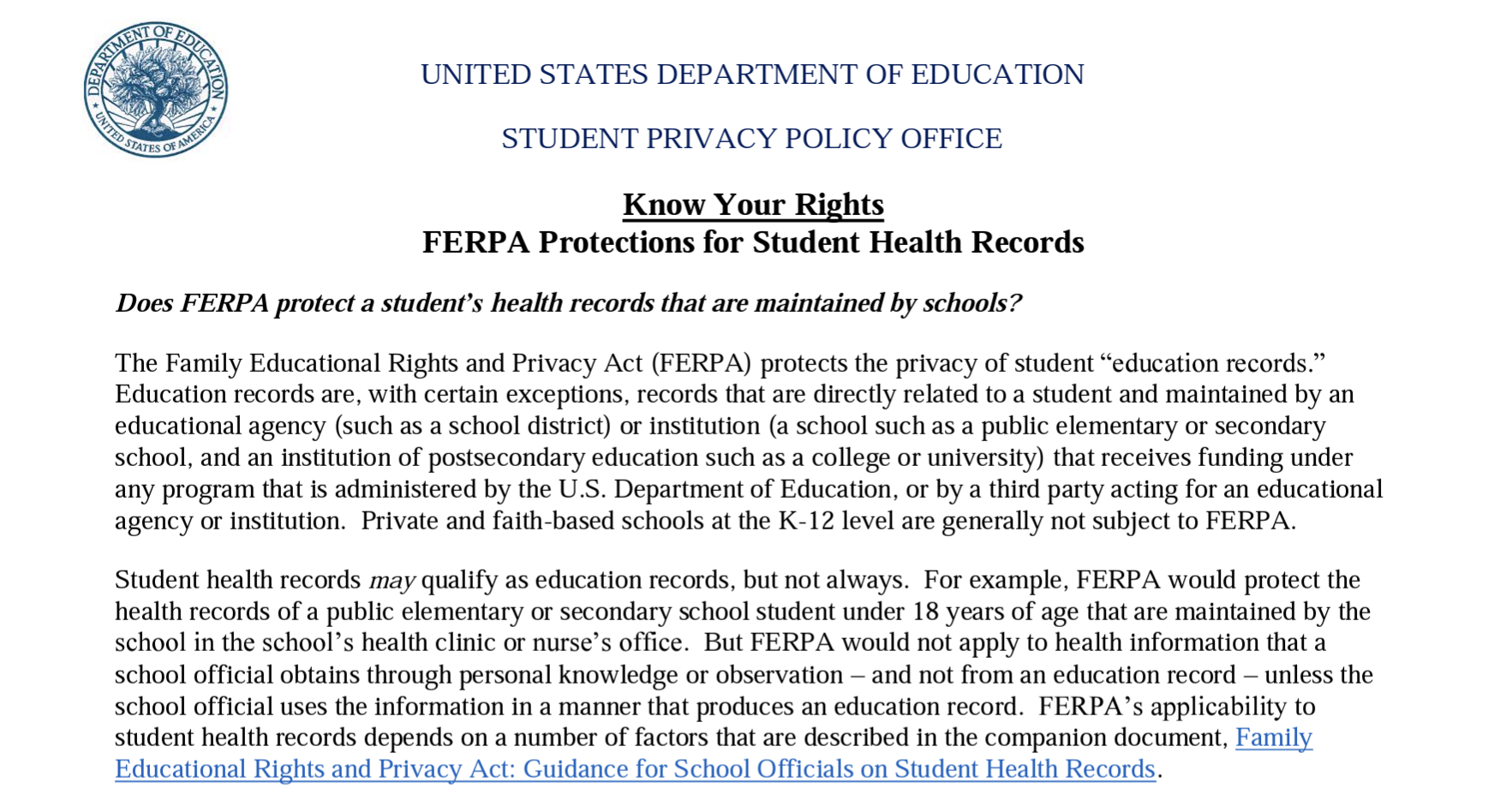This resource is provided by ACSA Partner4Purpose Lozano Smith.
The United States Department of Education’s Office for Civil Rights (OCR) recently issued a Dear Colleague Letter (DCL) regarding schools’ obligations under Title VI of the Civil Rights Act of 1964 (Title VI) to protect students from discrimination based on race, color, or national origin, including, shared ancestry and ethnic characteristics. The updated guidance is designed to provide clarity regarding existing legal requirements under Title VI and is in response to a recent rise in the number of complaints alleging discrimination by students and school community members who are or are perceived because of their shared ancestry or ethnic characteristics to be Jewish, Israeli, Muslim, Arab, Sikh, South Asian, Hindu, Palestinian, or any other faith or ancestry. The DCL includes illustrative examples to assist schools in carrying out the requirements of Title VI.
Background
Title VI protects students from discrimination based on race, color, and national origin in programs or activities that receive federal financial assistance. Title VI’s protections extend to those who experience discrimination based on shared ancestry, ethnic characteristics, as well as a student’s citizenship or residency in a country with a distinct religious identity.
OCR enforces Title VI consistently with the First Amendment of the U.S. Constitution, which protects free speech. However, even if alleged harassment includes speech in a public setting or is politically or religiously motivated speech, a school is not necessarily relieved of its obligation to respond under Title VI. Similarly, although speech expressing views regarding a particular country’s policies or practices is protected by the First Amendment, Title VI may be implicated if that speech involves discriminatory comments or targets persons from a particular country. In other words, while the First Amendment protects discourse about a country’s practices, Title VI draws the line at discrimination.
Courts and OCR use two major frameworks to determine if schools have violated Title VI:
- Hostile Environment; and/or
- Different Treatment.
Hostile Environment Analysis
OCR may find that a school has violated Title VI if it determines that:
- A hostile environment based on race, color, or national origin exists;
- The school had notice of the hostile environment; and
- The school failed to take prompt and effective steps reasonably calculated to:
-
- end the harassment,
- eliminate any hostile environment and its effect, and
- prevent the harassment from recurring.
Harassment creates a “hostile environment” when:
- Unwelcome conduct based on race, color, or national origin that, when considering all circumstances;
- is subjectively and objectively offensive; and
- is so severe or pervasive that it restricts a person’s ability to participate in their education.
OCR’s investigations into complaints include a determination of whether, once the school was aware of the harassment, the school took steps to stop the harassment from occurring. If a school fails to take the necessary responsive steps, including implementing actionable steps to eliminate the discrimination and make students feel safe, OCR could find the school has not properly addressed complaints of discrimination. This could result in OCR finding a Title VI violation.
Different Treatment Analysis
When a complaint alleges that a school’s representative treated a student differently based on their race, color, or national origin, OCR applies a different treatment analysis. OCR will look for the following:
- The facts of the complaint; and
- Any direct evidence of discrimination.
For instance, a school policy that subjects students to different rules based on race would provide direct evidence of discrimination.
Where there is no direct evidence, OCR considers the following:
1. Did the school limit or deny educational opportunities, services, or benefits to students of a certain race, color, or national origin by treating them differently than other students?
If OCR finds that the answer is yes, OCR will ask:
2. Can the school provide a legitimate, nondiscriminatory basis for the different treatment?
If the school can supply a legitimate, nondiscriminatory basis for the different treatment, then OCR would determine whether the basis provided is the true reason for the school’s actions or is instead a pretext for discrimination.
Takeaways
OCR’s DCL reiterates that Title VI’s protections against discrimination based on race, color, and national origin include antisemitism and other forms of discrimination when based on shared ancestry or ethnic characteristics. Title VI protects the rights of students to access a school environment free from certain types of discrimination. If schools know that students are experiencing harassment based on their perceived or actual national origin, race, or color, schools should respond immediately to ensure students feel safe. Moreover, schools should ensure that none of their policies or practices impact students of some backgrounds differently than others.
If you have any questions about OCR’s recent DCL or schools’ obligations under Title VI, please contact any attorney at one of Lozano Smith’s eight offices located statewide.



































